Emma Lavelle knows the difference between a good hotel and an excellent hotel
And the importance of conscious, slow-paced tourism
Welcome to Travel Buddies, a Mindholiday series that celebrates the idea that travel isn’t just about where you go. It’s about who you go with, the cultures you engage with, the people you meet along the way, and the memories you create.
Today I’m chatting with Emma Lavelle, a travel, accommodation, and nature photographer and slow travel + lifestyle writer based in the United Kingdom. Emma also writes on Substack — her newsletter is Postcards from Wherever.
Tell us a little bit about yourself!
I’m a travel writer and photographer based in the countryside in the north of England. I shoot for hotels and hideaways, and travel brands – plus ad-hoc lifestyle and nature photography – alongside writing about a slower pace of travel, scribing hotel reviews and writing content for travel websites. I was also the ghost writer of a coffee table book themed around slow-paced destinations and beautifully designed homes. My newsletter, Postcards from Wherever, is where I write about my personal travels, share my design-led hotel recommendations and scribe musings about a slower pace of travelling. Besides travelling, writing and photography, I love wild swimming, long walks, hanging out with my dog (Evie) and curling up in bed with a good book.
Overtourism is a huge problem worldwide right now. Tell me more about what slow, conscious, design led travel means to you, and why you gravitate towards it.
I agree that overtourism is a huge issue, and we really need to think more consciously about where and when we travel. My personal preferences for more relaxed, slow-paced trips means that I naturally gravitate away from places that are busy and overcrowded, but I do sometimes find myself in destinations that make me question whether or not I should be there.
My advice would be that if you are desperate to travel somewhere that is blatantly struggling with overtourism (such as Barcelona, Venice or Dubrovnik), travel out of peak season, don’t stay on cruise ships, and invest money into the local economy by staying in accommodations and dining in establishments owned by people who actually live there.
Adopting a slower pace of travel is all about treading more gently in the places you choose to visit, as well as taking the time to actually get to know them beyond the usual tourist traps. Slow travel generally means staying in one place for longer rather than fleeting weekend visits. It means getting around on your own two feet and embracing getting lost along the way. It means chatting to locals and asking for their tips, rather than relying on guide books. It means lingering over lunches, taking your time over what you enjoy when travelling (such as swimming in the ocean, browsing local markets, or learning about the local culture), and allowing for spontaneity, rather than overplanning.
Slow travel can also mean travelling by train or boat rather than flying, but I can’t write this without admitting that I still fly to destinations for both work and leisure. You don’t have to be ‘perfect’ when it comes to travelling slower and more consciously, however, small changes make a difference: such as vowing never to take internal flights, staying in accommodations with sustainable incentives, leaving natural landscapes exactly as you found them (leave no trace, but also don’t take anything home with you), and shopping at and eating in locally owned restaurants.
Travel is one of my greatest passions, and it’s also a huge portion of my work. But I’m conscious of the impact my travels have on the planet, and actively seek to minimise this. I want the beauty of the natural world to be preserved for the next generations to experience and enjoy. I’ve also realised over the years that travel should be enjoyable, insightful, educational and inspirational – but all too often it can become stressful, frantic, uninspiring and banal. We need to discover the places that we visit for ourselves, rather than simply travelling for the aim of ticking off a bucket list of sights or taking selfies for social media.
You take gorgeous photos of hotels all over the world. What do you think sets apart an excellent hotel from a good hotel?
The size and comfort of the beds – and whether there are enough pillows and they are supportive. There’s nothing worse than only being given one pillow or having to make do with a really flat one.
Design-led interiors. I much prefer hotels that have characterful interiors with plenty of colour, pattern and interesting textiles. I dislike hotels that feel too corporate, where all the rooms are identical, and have no soul.
I love a good, weighty, tasseled room key. I’m always disappointed if I’m handed a swipe card.
When it comes to hotel bathrooms, I am always delighted to find either a huge tub or a walk-in shower. Preferably both. Preferably with a little personality such as an antique sink, colourful tiles or a nice wallpaper.
Service definitely makes a difference. The little things like being handed a drink on arrival, the hotel staff calling you by name, or having an afternoon treat such as a fruit basket or homemade cookie delivered to your room each day.
How has being a travel photographer and writer shaped your own travel experiences?
I’m very picky about where I stay now, as I love staying in hotels that I can photograph to add to my portfolio. I used to not care about where I slept because I’d be out all day exploring, but as I’ve grown older and my travel tastes have changed (plus since I began focusing on writing about and shooting design-led boutique hotels), I’ve really learned the value of a Very Good Hotel.
You’ve traveled to many fantastic hotels. What's the best hotel you've ever stayed at, and what hotel are you dying to visit?
My favourite hotel is Glebe House in Devon. It's a tiny agriturismo with six individually decorated rooms and one cabin, bursting with personality. The food is just as important as the decor, with most of the produce grown on site or sourced locally. The owners are wonderful hosts, usually on hand for a chat over a homemade kombucha in the living room after dinner. It's a real home from home - the kind of place you want to return to over and over again, so you can stay in a different room each time.
Number one on my list has to be Sterrekopje Farm in South Africa. Nestled in the foothills on the Franschhoek mountains, this regenerative farm boasts eleven private sanctuaries. Each is a treasure trove with beautifully designed interiors, boasting some of the most opulent bathrooms I've ever laid eyes on (it would be almost impossible to pick which room to sleep in). Everything is included in your stay - from food grown on site to the long list of rituals on offer in the Bathhouse spa. There are pools, ponds and a lake to swim in, abundant gardens to explore, and animals to befriend. It looks like heaven on earth, and I hope I can make it there one day.
Other places high on my list include Tonnara di Scopello, Villa Palladio in Jaipur, Hotel Corazon and Grand Hotel Son Net in Mallorca, all the Ash Hotels in the US, and Nusfjord in the Lofoten Islands.
What’s your definition of a perfect travel buddy? What qualities do you look for in someone you travel with?
Someone relaxed, who doesn’t want to cram a million things into one day and is happy to take it slow. But also someone who is as eager as me to get out of bed in the morning to start the day – I don’t go on holidays for lie-ins, I want to wake up to shoot golden hour and then indulge in a long lazy breakfast. Even if I’m travelling for leisure, I have my camera with me at all times and am always taking photos, so also someone patient who doesn’t mind me shooting every inch of our accommodation or dawdling to get the perfect shot.
Who in your life is your ideal travel buddy, and how have they affected your traveling style? What is your favorite memory traveling with them?
I really should say my boyfriend, as we travel together most often - but as much as I enjoy travelling with him, I have to say one of my best friends is my ideal travel buddy. We've been friends for almost 20 years now, and we are just perfect travel companions. She loves the water as much as I do, so our trips together usually revolve around being as close to the sea or a lake as possible, spending most of our time either swimming or relaxing with books by the water's edge.
My favourite travel memory to date with her was spending a week exploring one of her favourite secret islands in Croatia - she was born in Bosnia and knows Croatia like the back of her hand.
You’re going on a trip with friends! What’s your role when it comes to planning, and how do you divide responsibilities?
Haha! I am always the one to instigate the trip, the one to book everything, the planner, and the one to take charge of everything from boarding passes to packing. I actually really enjoy the planning stage of travelling, but I’d love to go on a trip that someone else booked and planned out for me.
If you could plan your dream trip with one person, dead or alive, who would it be?
This is such a hard question as I have so many dream trips! In reality, it would probably be travelling around Mexico, India, or the Nordic countries with my boyfriend or one of my best friends. But if I can say anyone, I’d love to travel with one of my favourite photographers, such as Lucy Laucht, Mark Anthony Fox, or Lavinia Cernau to observe them at work.
Do you have any travel rituals?
I don’t really have any rituals, but I am super organised and always start packing a week before I travel, adding items to my suitcase when I think of them or following a wash. I can’t imagine going somewhere and only packing the day before!
If you could sum up your travel style in three words, what would they be?
Slow paced, design-led, conscious.
You have a friend visiting you in town for the weekend. Where are you taking them to show them a great time?
I live in a small town in the countryside in the north of England, located between Leeds and Manchester. We often have friends visiting, especially in the summer for long walks in the hills and swims in our favourite lakes and reservoirs. The one downside of where we live is that there currently isn’t anywhere good to eat, so we’d be cooking at home. In the evening, we’d be popping down to my friend’s bar (conveniently at the bottom of my lane) for cocktails and dancing.
The flight attendant is coming around with the drink and snack cart. What are you ordering?
If it’s in the morning, usually just water. If it’s an afternoon or evening flight, it would be a glass of white wine and a packet of crisps.
Thanks for reading!
xx,
Bella
To see Emma’s adventures, you can subscribe to Postcards from Wherever and follow her Instagram.
Today’s newsletter is made possible by paid subscriptions. If you loved this interview, consider supporting my work by becoming a paid subscriber for $5/month, or $50/year.
Thanks for being a subscriber of MindHoliday! Here are other ways you can show your support:
❤️ tapping the heart below (it helps my content get discovered!)
💌 forwarding this to a friend
🤗 supporting my writing by becoming a paid subscriber for $5 a month, or $50 a year






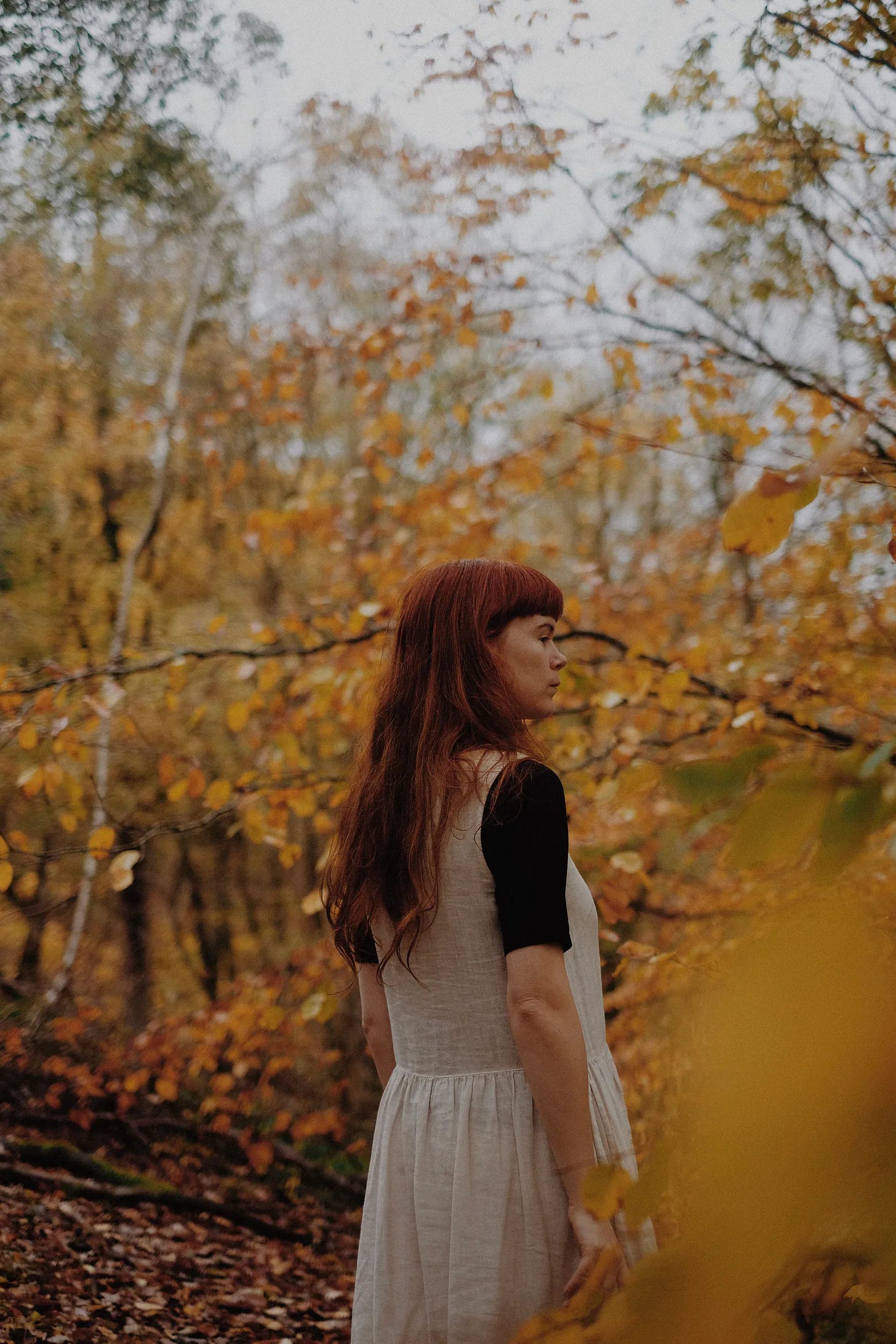



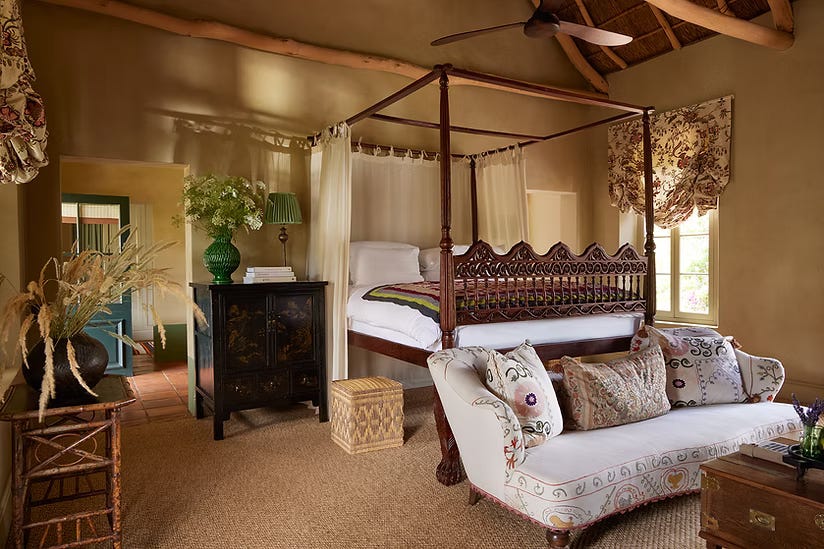
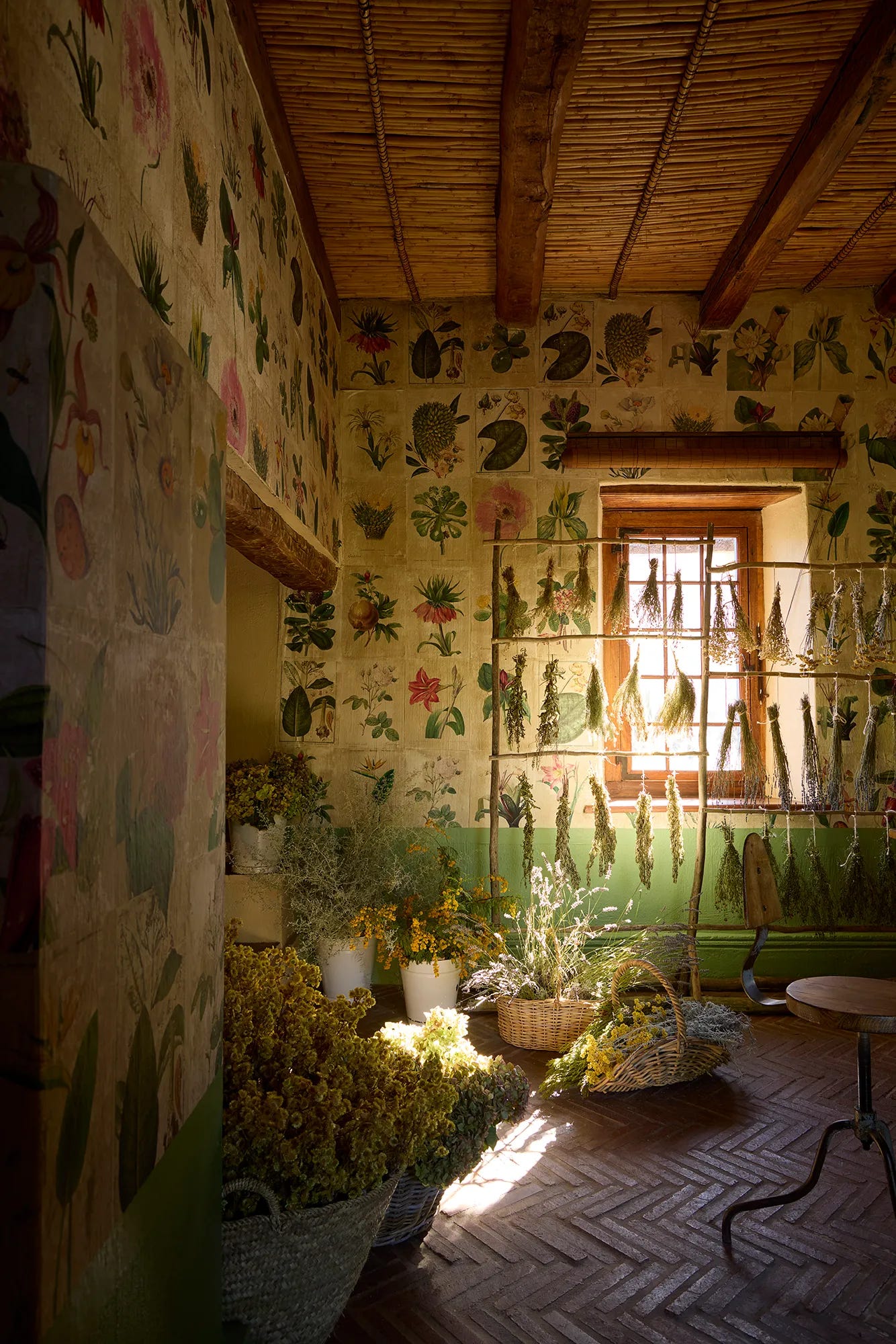
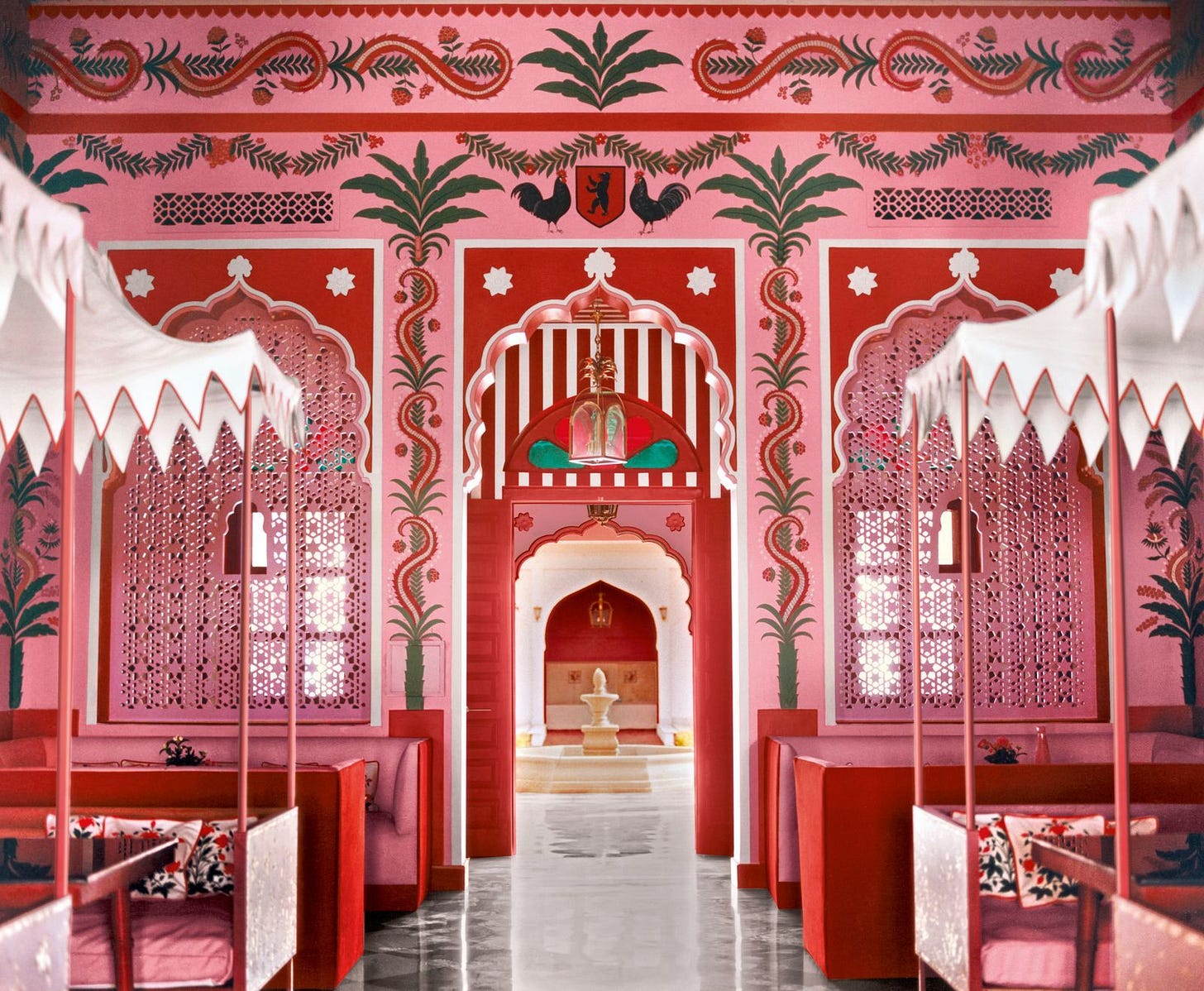

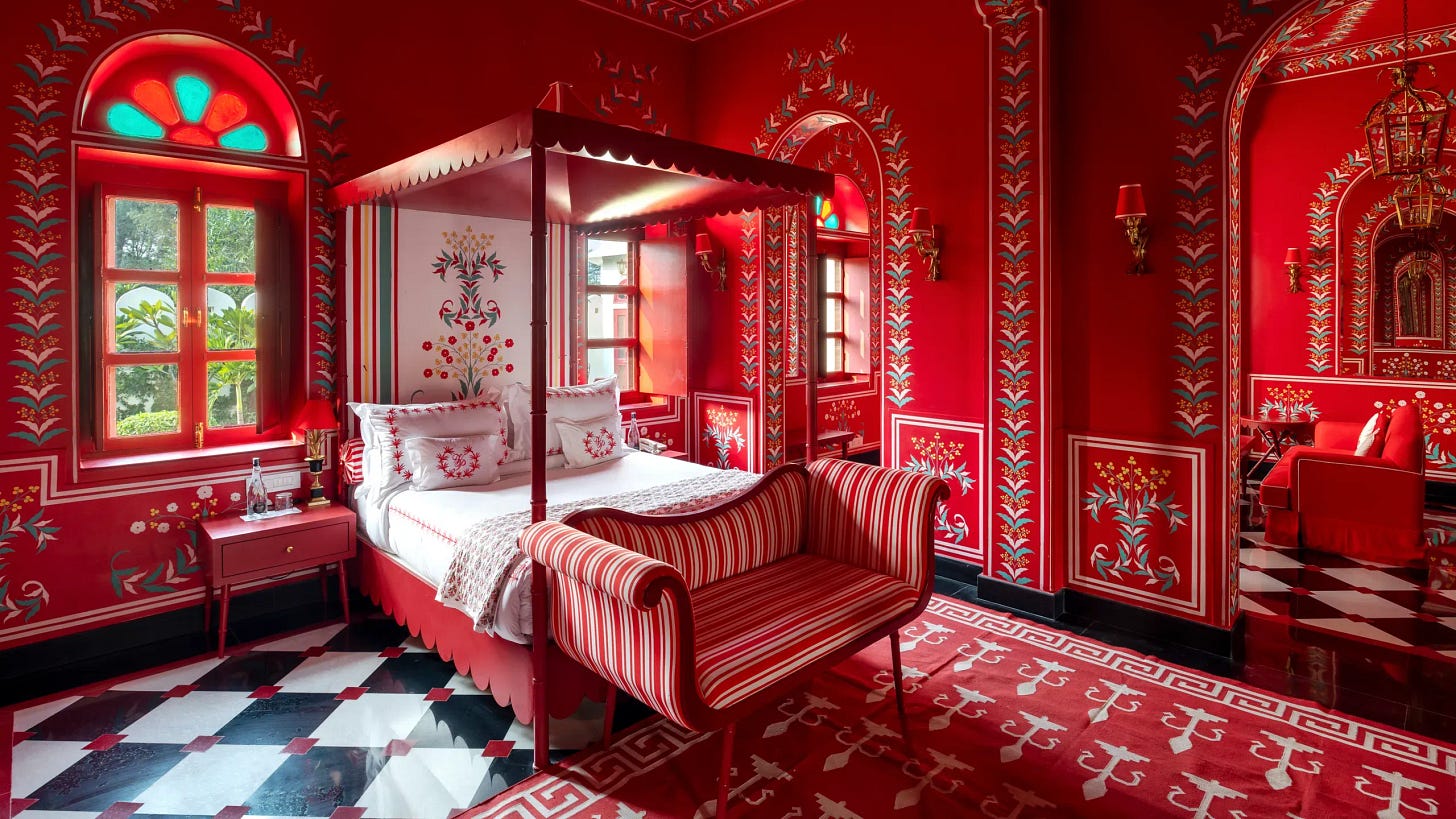


Really enjoyed this interview and agree with Emma when it comes to how to travel. Thanks for sharing!
Loved this!